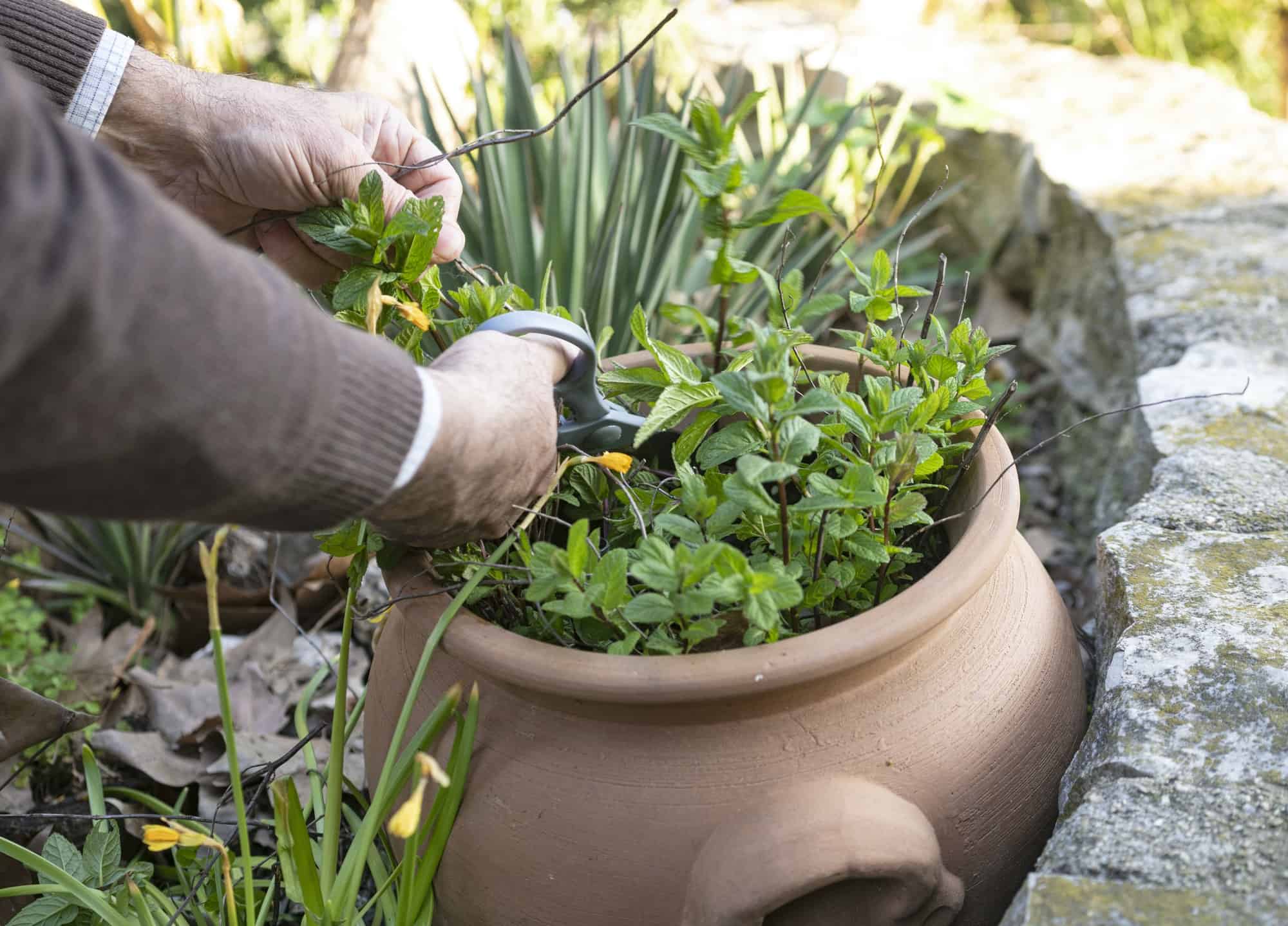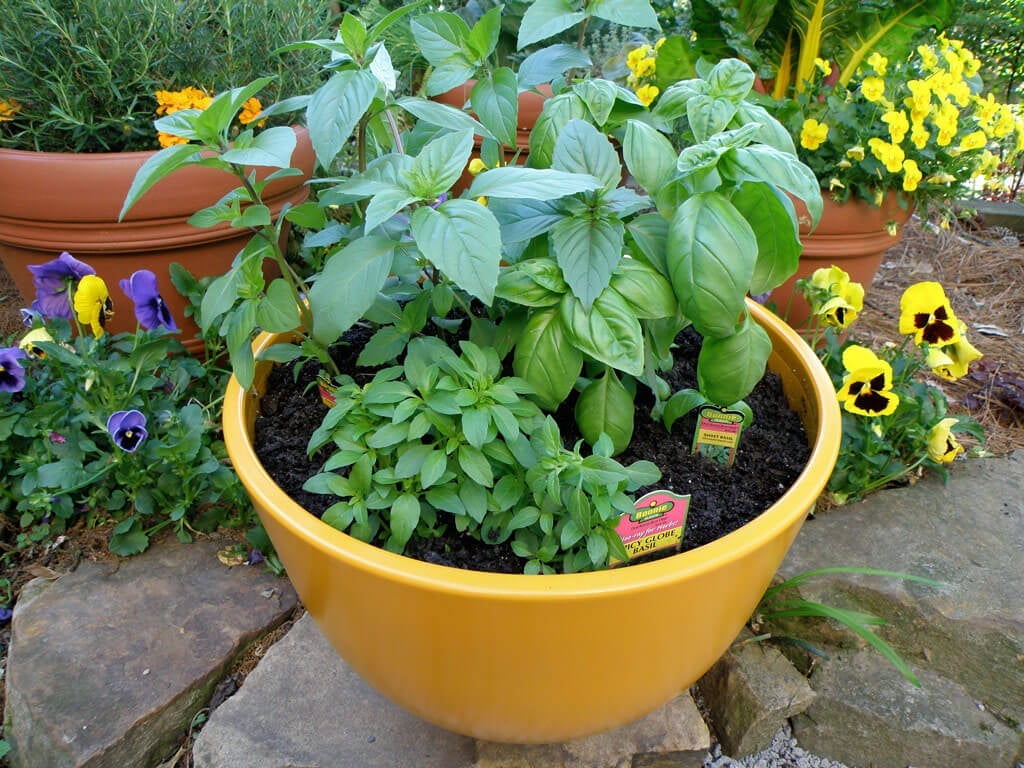Grow Thai Basil Like A Pro: The Best Companion Plants For
Introduction
Thai basil is a flavorful herb that is native to Southeast Asia. It is a member of the mint family, and it has a strong, licorice-like flavor. Thai basil is often used in Thai cuisine, and it is also a popular ingredient in pesto.
Growing Thai basil is relatively easy, but there are a few things you need to know to get the best results. In this blog post, we will discuss the best way to grow Thai basil, including companion planting.
Main Content
Choosing the Right Location
Thai basil prefers full sun, so choose a location in your garden that gets at least 6 hours of sunlight per day. The soil should be well-drained and rich in organic matter. If your soil is sandy or clayey, you will need to amend it with compost or manure.
Planting
Thai basil can be planted from seed or from seedlings. If you are planting from seed, sow the seeds 1/2 inch deep in the spring or early summer. If you are planting seedlings, space them 12-18 inches apart.
Watering
Thai basil needs regular watering, especially during hot weather. Water the plants deeply so that the soil is moist but not soggy.
Fertilizing
Thai basil does not need a lot of fertilizer, but you can give it a light application of compost tea or liquid fertilizer once a month.
Companion Planting
Companion planting is a great way to improve the health and productivity of your garden. When you plant certain plants together, they can benefit each other in a variety of ways.
Some of the best companion plants for Thai basil include:
- Tomatoes: Thai basil and tomatoes are a classic pairing. The basil helps to repel pests from the tomatoes, and the tomatoes provide shade for the basil.
- Peppers: Peppers and basil also make good companions. The basil helps to improve the flavor of the peppers, and the peppers help to deter pests from the basil.
- Radishes: Radishes and basil are another good combination. The basil helps to repel pests from the radishes, and the radishes help to improve the drainage of the soil for the basil.
- Carrots: Carrots and basil are also compatible plants. The basil helps to repel pests from the carrots, and the carrots help to improve the flavor of the basil.
Harvesting
Thai basil can be harvested as soon as the leaves are large enough to use. To harvest, simply snip off the leaves from the top of the plant. You can continue to harvest Thai basil throughout the growing season.
Conclusion
Growing Thai basil is a great way to add flavor to your garden and your meals. By following these tips, you can grow healthy, productive Thai basil plants that will provide you with fresh leaves all season long.
Thai basil is a delicious and versatile herb that can be used in a variety of dishes. But did you know that there are certain plants that can help to improve the growth and flavor of Thai basil?
That's right, companion planting can be a great way to boost the health of your Thai basil plants. Some of the best companion plants for Thai basil include:
- Tomatoes: Tomatoes and Thai basil are a classic pairing, and for good reason. The two plants complement each other's flavors, and they also help to deter pests.
- Peppers: Peppers and Thai basil are another great combination. The peppers add heat to the dish, while the Thai basil adds a refreshing flavor.
- Marigolds: Marigolds are not only beautiful flowers, but they also help to repel pests. Planting marigolds near your Thai basil plants can help to keep them healthy and pest-free.
If you're interested in learning more about Thai basil companion plants, I recommend visiting Garden Wiki. This website has a wealth of information on the topic, including a list of the best companion plants for Thai basil, as well as tips on how to plant and care for these plants.
FAQ of thai basil companion plants
Q: What are the best companion plants for Thai basil?
A: Thai basil is a versatile herb that can be grown with a variety of other plants. Some of the best companion plants for Thai basil include:
- Tomatoes: Thai basil helps to deter tomato hornworms, a common pest of tomatoes.
- Cilantro: These two herbs complement each other's flavors, and they can be grown together in a container or in the garden.
- Chives: Chives help to repel pests, and they can also improve the flavor of Thai basil.
- Marigolds: Marigolds help to repel nematodes, a common soil-borne pest.
- Potatoes: Thai basil helps to deter potato beetles, a common pest of potatoes.
Q: What are some plants that should not be grown near Thai basil?
A: There are a few plants that should not be grown near Thai basil, as they can compete for nutrients or water. These plants include:
- Bay laurel
- Rosemary
- Sage
- Lavender
- Mint
Q: How do I plant Thai basil with companion plants?
A: When planting Thai basil with companion plants, it is important to consider the size and growth habit of each plant. For example, tomatoes and potatoes are both large plants that need plenty of space, so they should not be planted too close together. Cilantro, chives, and marigolds are all smaller plants that can be planted closer together.
It is also important to consider the light and water requirements of each plant. Thai basil needs full sun and moist soil, so it should be planted with plants that have similar requirements.
Q: What are the benefits of planting Thai basil with companion plants?
There are several benefits to planting Thai basil with companion plants. First, companion plants can help to deter pests and diseases. For example, marigolds help to repel nematodes, and chives help to repel pests.
Second, companion plants can help to improve the flavor of Thai basil. For example, tomatoes and cilantro complement the flavor of Thai basil.
Third, companion plants can help to improve the growth of Thai basil. For example, potatoes help to provide nutrients for Thai basil.
Q: How do I care for Thai basil and its companion plants?
Thai basil and its companion plants need regular watering, especially during hot weather. They also need full sun, so they should be planted in a location that gets at least 6 hours of sunlight per day.
In addition to watering and sunlight, Thai basil and its companion plants may need to be fertilized occasionally. A balanced fertilizer, such as a 10-10-10 fertilizer, can be applied every few months.
Image of thai basil companion plants
- Tomatoes: Tomatoes and Thai basil are a classic companion plant pairing. The tomatoes provide the basil with support, and the basil helps to deter pests.
- Marigolds: Marigolds are another great companion plant for Thai basil. They help to repel pests, and they also add a splash of color to the garden.

- Cilantro: Cilantro and Thai basil are both members of the mint family, so they grow well together. They also complement each other's flavors in cooking.

- Borage: Borage is a flowering herb that attracts pollinators, which can help to improve the pollination of your other plants. It also helps to deter pests.

- Parsley: Parsley is a versatile herb that can be used in a variety of dishes. It also helps to deter pests, and it can improve the flavor of tomatoes.

Post a Comment for "Grow Thai Basil Like A Pro: The Best Companion Plants For"